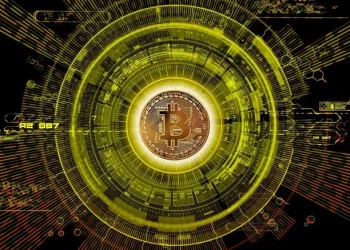In the fast-evolving landscape of finance and technology, the digital rupee has emerged as a beacon of innovation, signaling a shift towards a more technologically advanced and inclusive financial system. This article will delve into the intricate workings of the digital rupee, shedding light on the underlying blockchain technology that powers this digital transformation.
Understanding the Basics: The Digital Rupee Explained
At its core, the digital rupee is a digital representation of the Indian Rupee (INR), existing in electronic form. Unlike traditional physical currency, the digital rupee is decentralized, utilizing blockchain technology to facilitate secure, transparent, and efficient transactions.
Blockchain Technology: The Backbone of Digital Rupee Operations
The following are blockchain technologies:
1. Decentralization and Security:
The key principle of blockchain technology is decentralization. Instead of relying on a central authority, transactions involving the digital rupee are recorded on a distributed ledger maintained by a network of computers, or nodes. This decentralized nature ensures that no single entity has control over the entire system, enhancing security and mitigating the risk of manipulation.
2. Transparency through Immutable Ledgers:
Every transaction made with the digital rupee is recorded on a block within the blockchain. Once a block is filled with transactions, it is linked to the previous block, creating an immutable chain. This transparent and unchangeable record of transactions enhances trust, accountability, and visibility within the financial system.
3. Smart Contracts for Automation:
Digital rupee transactions can leverage smart contracts, self-executing contracts with predefined rules written into code. These contracts automate processes, allowing for conditions and terms to be executed automatically when predefined criteria are met. Smart contracts enhance efficiency, reduce the need for intermediaries, and streamline financial operations.
How Digital Rupee Transactions Work?
Here’s how digital rupee trading works:
1. Issuance of Digital Rupee:
The digital rupee is typically issued by the central bank, ensuring regulatory oversight and compliance. The issuance process involves the creation of digital tokens that represent the equivalent value of physical rupees. These tokens are then made available for use in the digital ecosystem.
2. User Wallets:
Individuals and entities engaging with the digital rupee need a digital wallet. This wallet is a secure digital space where users can store, send, and receive digital rupees. Wallets can be software-based, such as mobile or desktop applications, or hardware-based for added security.
3. Transaction Initiation:
When a user initiates a transaction using digital rupees, the details of the transaction are broadcasted to the decentralized network. This includes the sender’s and recipient’s wallet addresses, the amount being transferred, and any additional information relevant to the transaction.
4. Consensus Mechanism:
The decentralized network of nodes employs a consensus mechanism to validate and confirm transactions. In the case of many blockchain networks, this involves a consensus algorithm like Proof of Work (PoW) or Proof of Stake (PoS). Once a consensus is reached, the transaction is added to a block on the blockchain.
5. Blockchain Confirmation:
Following validation, the transaction undergoes confirmation on the blockchain. This step involves the addition of the block containing the transaction to the chain. The transaction is now permanently recorded and becomes part of the transparent transaction history accessible to all network participants.
6. Updating User Wallets:
Subsequent to confirmation, the digital rupees are updated in the user wallets. Both the sender and the recipient witness the change in their wallet balances, reflecting the completed transaction. This process occurs in near real-time, offering users quick and efficient transaction settlement.
Benefits and Potential Impact:
Here are the benefits and potential impacts:
1. Financial Inclusion:
The digital rupee holds the potential to extend financial services to unbanked and underbanked populations. With a smartphone and internet connectivity, individuals can access and participate in the digital financial ecosystem.
2. Reduced Transaction Costs:
By eliminating intermediaries and automating processes through smart contracts, the digital rupee can significantly reduce transaction costs associated with traditional banking systems.
3. Efficient Cross-Border Transactions:
Leveraging blockchain’s borderless nature, the digital rupee can facilitate faster and more cost-effective cross-border transactions, simplifying international remittances and trade settlements.
4. Enhanced Security:
The cryptographic principles of blockchain ensure robust security measures, protecting the digital rupee from counterfeiting, hacking, and other fraudulent activities.
See Also: What Is The Use Of Digital Rupee: A Full Guide
Conclusion: Paving the Way for the Digital Financial Future
As the digital rupee continues to gain traction, its innovative approach to currency management positions it at the forefront of the global shift towards digital currencies. Powered by blockchain technology, the digital rupee promises increased financial inclusion, reduced transaction costs, and enhanced security. While challenges and considerations exist, the potential benefits signal a transformative era in the way we perceive, manage, and transact with currency. The digital rupee is not just a currency; it’s a paradigm shift towards a more accessible, efficient, and secure financial future.
Related topics:

















